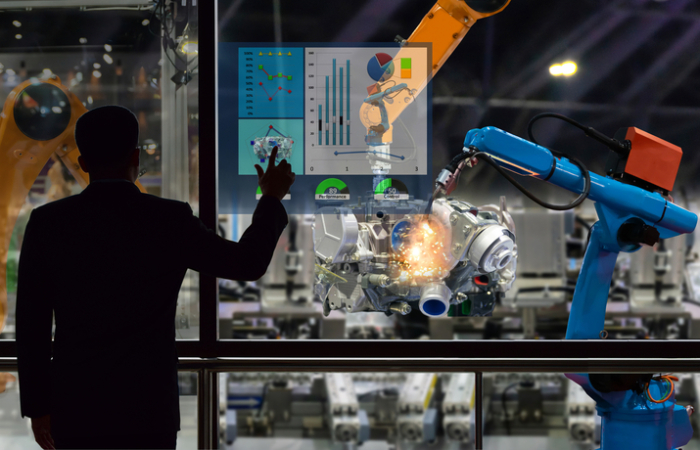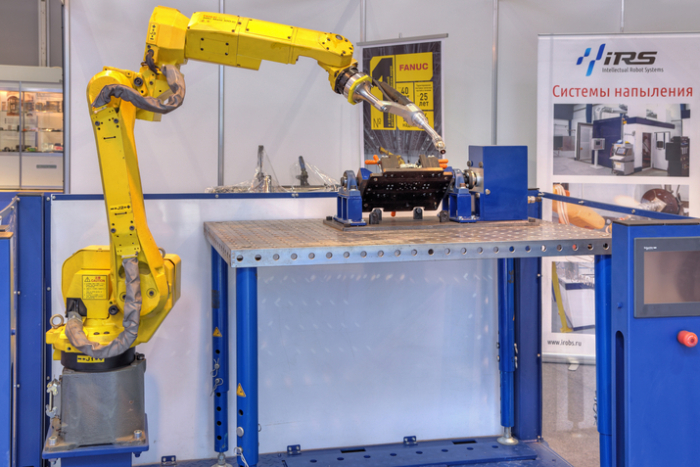
 Data Structure
Data Structure Networking
Networking RDBMS
RDBMS Operating System
Operating System Java
Java MS Excel
MS Excel iOS
iOS HTML
HTML CSS
CSS Android
Android Python
Python C Programming
C Programming C++
C++ C#
C# MongoDB
MongoDB MySQL
MySQL Javascript
Javascript PHP
PHP
- Selected Reading
- UPSC IAS Exams Notes
- Developer's Best Practices
- Questions and Answers
- Effective Resume Writing
- HR Interview Questions
- Computer Glossary
- Who is Who
Is it necessary for mechanical engineers to know Python?
We shall find out in this article whether Python knowledge is required for mechanical engineers. Python applications for mechanical engineers.

Most people think that mechanical engineering has nothing to do with any kind of coding platform. Most mechanical engineers don't like computer programming, so they don't see the chances they miss. As we move toward a future with electric cars, autonomous transportation, and automation, the next generation of mechanical, aerospace, and automotive engineers must be able to combine mechanical engineering concepts with a computer language. This will allow them to simulate or automate ideas more quickly.
A highly straightforward and effective programming language is Python, for instance. In a couple of seconds, it can resolve challenging problems. Python's versatility means it might be handy even if you're a mechanical or automotive engineer
The list of Python's uses in the field of mechanical engineering is not exhaustive.
Python Uses for Mechanical Engineering

The following are the major areas in which python is used in Mechanical Engineering ?
Numerical Analysis
Python is most commonly used to perform numerical analysis. It would take a long time to solve problems involving linear equations and ODE/PDE analytically. In mechanical engineering, boundary conditions are frequently present, making numerical analysis problems twice as difficult to solve.
Imagine that you are trying to figure out the difference in pressure across a pipe through which a liquid is moving. Not only would it take a long time to figure out the answer, but it would also be hard to get accurate data and graph the differences. By using computer languages, you may obtain graphical simulations and quickly address these difficulties.
If you learn numerical analysis and coding, you can get jobs in fields like manufacturing, automotive, energy, and even mechanical jobs in software companies (as thermal engineers). Software companies like Google and Facebook hire mechanical and thermal engineers to make sure that their database and cluster systems are kept at the right temperature.
To evaluate different designs, these engineers write scripts in programming languages like MATLAB or Python and input them into CFD software. Given that Python is easier to use than C++, Google's engineering slogan is "Python where we can, C++ where we must."
Thermodynamics
Python may be used to solve traditional thermodynamics issues. You may quickly solve any problem, whether it involves chemical kinetics or fluid dynamics, by using code. In the real world, it doesn't matter how you finish tasks or solve problems. You can either spend 60% of your time-solving math and thermodynamics problems and move quickly through the other 40% of the project, or you can spend 20% of your time using Python to solve these problems and focus on the tasks at hand.

Your efficiency determines every other component of your result. Python's extensive library and user-friendly syntax may make it possible to address complex issues with relative simplicity.
Computational Fluid Dynamics(CFD)
It is another field in which Python programming excels. The language PyCFD is used to formulate and resolve partial differential equations, compute fluid volumes using Navier-Stokes equations, and resolve boundary value PDEs via the boundary element technique.
This has three significant consequences for mechanical engineers and their businesses overall.
First, bear in mind that, just like you may use your coworker's code after you've written your scripts, the rest of the firm can use them. Everyone benefits from the time savings, and your teamwork will improve as a result.
Second, by scripting particular features on software programs like Onshape, we might be able to improve automation even further. In conclusion, this enables us to quickly and simply develop unique features for use in our projects. These include things like custom beams, airfoils, spur gears, ray tracers, and wiring.
Last but not least, Python enables us to automate large computations that would otherwise be challenging or laborious. With a maximum of 17 significant digits, the language excels in floating-point math. Python is an obvious choice as the base language for mathematically sophisticated machine learning (ML) frameworks like PyTorch.
What Can Mechanical Engineers Gain from Python Programming That MATLAB and Excel Cannot?
There's a good reason why Excel and Google Sheets are so widely used in businesses. Spreadsheets provide a variety of basic operations, so even novice users may do complicated jobs fast.
Excel and applications of a similar nature, however, have restrictions. The more data there is, the slower Excel becomes. For large-scale data projects, however, Python is the dominant data science tool.
The high-level capabilities of Python not only hasten code creation and increase the dependability of problem-solving techniques, but the scientific community also already has a wide range of libraries that are immediately usable.
These include the specialized scientific programs NumPy and SciPy, but that is only the beginning.
While SymPy is designed primarily for symbolic computing applications spanning from calculus to quantum physics, Matplotlib is a 2D graph charting software that is great for scientific and engineering workloads.
Mechpy, a Python toolkit designed exclusively for mechanical engineers, is another option.
It is also clear how MATLAB and Python differ from one another. Despite being interpreted languages, both in terms of technical and conceptual features, they are different.
Python is far more adaptable than MATLAB, has a significantly bigger support network, and offers most of the same capabilities, with the exception of small changes in syntax between MATLAB and Python. One example is Simulink, a simulation and model-based design tool for MATLAB.
These technical peculiarities mostly result from their disparate approaches to software development: Python is an open-source project maintained by thousands of developers, whereas MATLAB is a closed-source commercial program.
Finally, Python stands to gain from a few significant benefits. To begin with, Python's adaptability enables us to do more tasks with fewer resources. The same piece of software can mix features from other libraries, streamlining processes and reducing human involvement. And we've all witnessed what occurs when a company has an excessive number of spreadsheets. Python programming makes this easier by enabling us to consolidate the majority of this work onto a single, cohesive platform.
Conclusion
Even if it isn't our main area of interest as mechanical engineers, computer programming is essential in today's digital world. Python scripting is simple to expand into a variety of use cases as your command of it increases since it already has all the necessary mathematical and scientific skills.

